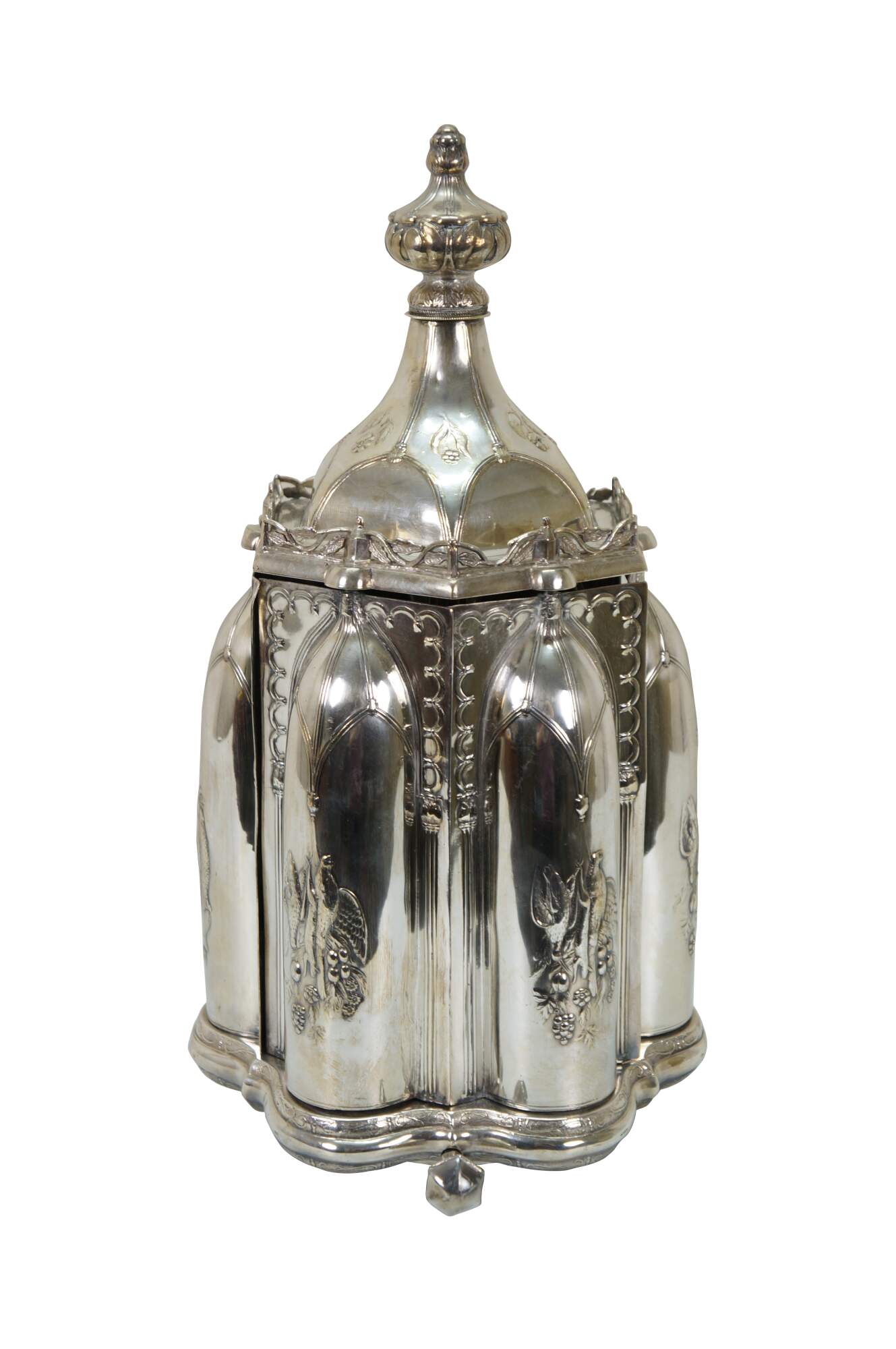
Shipping:
Free Shipping Included
Delivery:
Estimated 2-15 Business Days
Payments:
Credit Card, Check, Cash, PayPal, Apple Pay, Venmo
Returns:
30 Days 100% Money Back Guarantee, Buyer Pays Return Shipping
Description
Rare antique circa 1856 Victorian silverplate "Magic Caster" by Roswell Gleason & Sons. A Gothic style hexagonal, rotating cruet stand with floral and foliate details. The six lobed panels around the sides sport images of game birds and fish. Turning the knob on the base rotates the panels open to reveal storage slots for six cruet / condiment bottles. This early example of the design is marked "Patent Applied For" at the top of the piece. Patented by Edward Gleason, 1856.
"Roswell Gleason (April 6, 1799 – January 27, 1887) was an American manufacturer and entrepreneur who rose from apprentice tinsmith to owner of a large manufacturing concern that initially produced pewter objects for domestic and religious use, and later added Britannia ware and silver-plated goods to its catalog. He was instrumental (possibly with encouragement from his friend Daniel Webster) in bringing the process of silver electroplating to America, creating a new market for less expensive substitutes for luxury goods. Gleason was born to Reuben Gleason (1770–1843) and his first wife, Martha, on April 6, 1799, in Putney, Vermont. Gleason moved to Dorchester in 1818 and was apprenticed to tinsmith William Wilcox in Dorchester's Four Corners neighborhood. In 1822 he took over the shop after Wilcox's death. The business produced tin and pewter goods for household and ecclesiastical use, such as plates, bowls, tankards, communion sets, candlesticks and oil lamps. By the 1830s, he was also producing Britannia ware. By 1850, Gleason's sons, Roswell Jr. (1826–1866) and Edward (1829–1863), had joined the business, now known as Roswell Gleason & Sons. Edward traveled to England to study the new technology of electroplating, first patented there in 1840. Silver-plated goods could be produced at a fraction of the cost of those fabricated in coin silver or sterling silver. Gleason's affordable wares quickly found a market among middle-class and upper-class households eager to display their wealth and taste in their homes. After a boiler explosion in 1870 damaged the factory, Gleason, whose sons had died a few years prior, decided to close the business in 1871 and retire. A major factor in Gleason's success was his ability to innovate, catering to a rising middle class clientele with a taste for mechanical gadgetry and the accessories of fine dining. His sons obtained patents for several products, including an ink stand and a cake basket, as well as several variations on the table caster, a device designed to hold condiment containers on the dining table. The 1866 product catalog listed more than sixty types of casters. They were very popular items; in 1844, the Boston and Sandwich Glass Company, which made bottles and jars for casters, ordered 150 dozen caster frames. One of the most elaborate casters concealed condiment bottles behind revolving doors and was cleverly marketed as the "Magic Caster"; an "improved" version added a bell and an egg stand. Catherine Lanford Joy writes, "With its combination of mechanical ingenuity, artistic design, and mysterious effect, Gleason's Magic Caster is quintessentially Victorian."" (Wikipedia)
Condition
Good Overall - Tarnish; gentle wear; no bottles
Dimensions
8" x 15" (Diameter x Height)